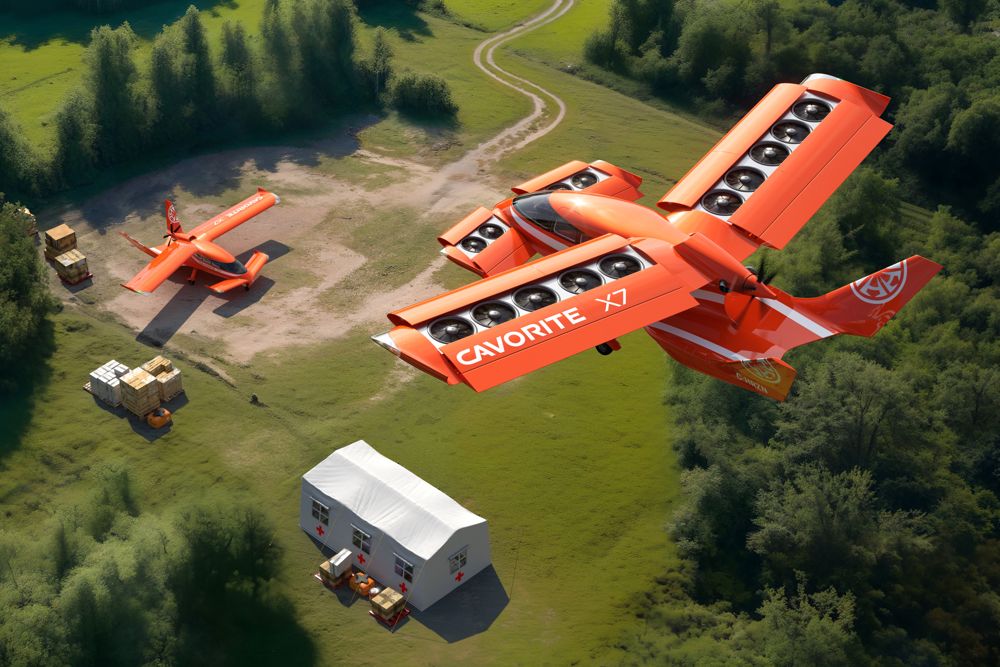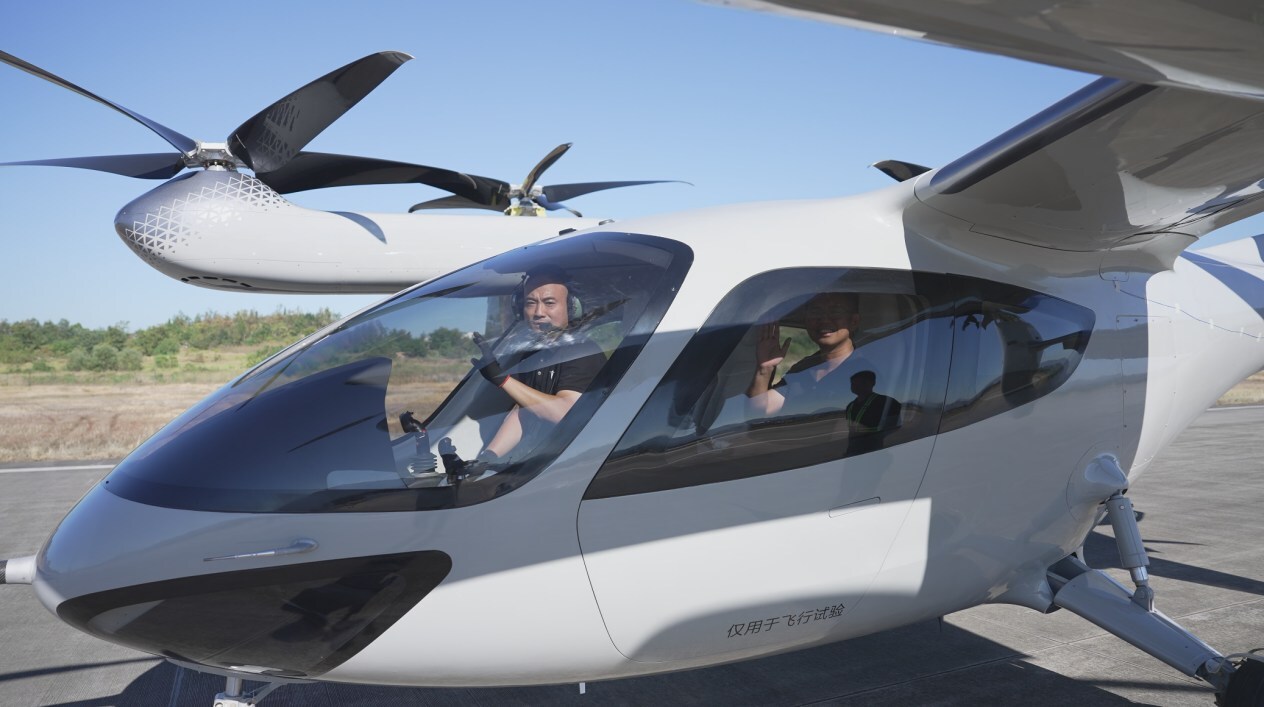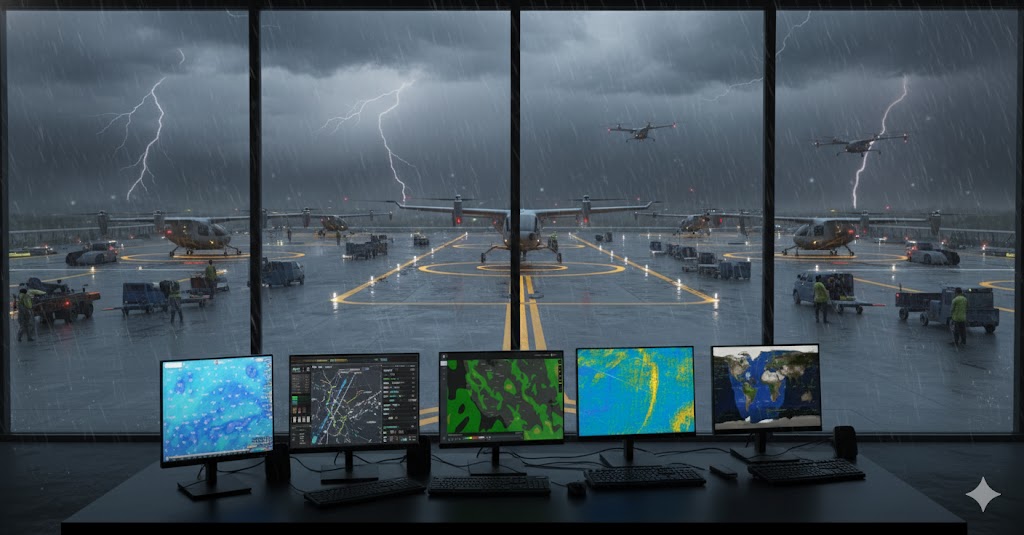New Horizon Aircraft Ltd. (NASDAQ: HOVR) filed its annual 10-K report on August 22, 2025, highlighting a company at a compelling crossroads in the low-altitude economy landscape. The Canadian aerospace firm, developing its hybrid-electric Cavorite X7 eVTOL aircraft, presents a mixed but increasingly compelling narrative for the regional air mobility market.
Financial Performance: The Numbers Tell Two Stories
The company’s financial results for the year ended May 31, 2025, paint a picture of controlled chaos that’s become typical of early-stage eVTOL developers. New Horizon reported a net income of $3.7 USD million, a remarkable turnaround from the previous year’s $8.16 million loss. However, this positive result stems mainly from a $21.4 million gain from terminating a Forward Purchase Agreement, not from operational excellence.
Strip away that accounting maneuver, and you find an operating loss of $13.585 million, reflecting the brutal reality of aircraft development in 2025. The company burned through cash on research and development ($3.66 million) and general administrative expenses ($9.925 million), increases driven by flight testing, engineering work, and the expensive dance of being a public company.
The earnings per share metrics show the accounting sleight of hand at work. Basic EPS jumped to $0.20 from negative $0.76 the previous year, while diluted EPS reached $0.17. With 25.8 million basic shares outstanding and 30.7 million on a diluted basis, the company maintains a relatively tight share structure for an emerging aviation firm.
Most critically for survival, New Horizon ended the period with over $15 million in cash, later reported as approximately $17 million, providing roughly 18 months of liquidity. In the cash-hungry world of aircraft certification, this represents a decent runway but hardly guarantees smooth sailing.
Technical Achievements: The Fan-in-Wing Gamble Pays Off
The report’s most significant revelation centers on New Horizon’s successful fan-in-wing forward transition flight in May 2025. This technical milestone positions the company among the first eVTOL developers to demonstrate this specific transition technology with a large-scale prototype, lending credibility to their unconventional approach.
The Cavorite X7’s fan-in-wing design represents a departure from the tiltrotor and multirotor configurations dominating the eVTOL space. By embedding lift fans within the wing structure, New Horizon aims to achieve superior forward flight efficiency while maintaining vertical takeoff capabilities. The successful transition flight suggests this hybrid approach can work in practice, not just on paper.
This achievement carries particular weight in the context of the broader low-altitude economy. While companies like Joby and Lilium have demonstrated their own transition capabilities, New Horizon’s fan-in-wing technology promises different performance characteristics, potentially offering advantages in range and speed that matter for regional air mobility applications.
Operational Strategy: Efficiency Over Excess
New Horizon’s approach to commercialization reveals a company trying to learn from the expensive mistakes of its competitors. The report emphasizes their “efficient approach to commercialization resulting in significantly reduced aircraft development costs relative to other eVTOL organizations”. This philosophy reflects the harsh financial lessons absorbed by the industry after years of cash burn without revenue.
The company’s talent acquisition strategy shows thoughtful engineering focus, bringing aboard Thomas Brassington, Justin Chapman, Andrea Mocellin, and John Wyzykowski. These additions suggest New Horizon is building depth in critical technical areas rather than pursuing the broad hiring sprees that characterized earlier eVTOL ventures.
Government funding commitments provide another stabilizing factor, offering non-dilutive capital that extends the runway without further diluting shareholders. This approach reflects growing government interest in supporting domestic advanced air mobility capabilities.
Market Position and Competitive Landscape
Within the low-altitude economy context, New Horizon occupies an interesting niche. The regional air mobility market they’re targeting sits between urban air mobility (focused on city center operations) and traditional aviation (constrained by airport infrastructure). Their hybrid-electric propulsion system aims to bridge these markets by offering a more extended range than battery-only eVTOL while maintaining the operational flexibility of vertical takeoff.
The Cavorite X7’s projected performance specifications, emphasizing “speed, range, and payload”, suggest targeting applications like inter-city passenger transport, emergency medical services, and cargo delivery across distances where helicopters currently operate but at lower costs and emissions.
This positioning faces significant challenges. Certification timelines remain uncertain, with regulatory bodies still developing frameworks for eVTOL operations. Supply chain relationships need careful management as the aerospace industry adapts to new propulsion technologies. Competition intensifies as larger players advance their own programs.
| Aircraft | Passenger Capacity | Maximum Range (miles) | Maximum Speed (mph) | Propulsion Type | MTOW (lbs) | Number of Rotors/Fans | Design Type | Country | Stock Symbol |
|---|---|---|---|---|---|---|---|---|---|
| Cavorite X7 | 6 + 1 pilot | 500+ | 280 mph (450 km/h | Hybrid Electric | 5,500 | 14 fans | Fan-in-wing | Canada | NASDAQ: HOVR |
| Joby S4 | 4 + 1 pilot | 150 | 200 | All-Electric | 4,400 | 6 rotors | Lift+cruise | USA | NYSE: JOBY |
| Archer Midnight | 4 + 1 pilot | 100 | 150 | All-Electric | 7,000 | 12 rotors | Lift+cruise | USA | NYSE: ACHR |
| Lilium Jet | 6 + 1 pilot | 155 | 175 | All-Electric | 7,275 | 30 ducted fans | Vectored thrust | Germany | NASDAQ: LILM |
| Eve eVTOL | 4 + 1 pilot (6 uncrewed) | 60 | 124 | All-Electric | 6,613 | 8 rotors | Lift+cruise |
Risk Assessment: The Usual Suspects and Some Surprises
The report identifies material risks that read like a greatest hits album of eVTOL challenges: capital requirements, regulatory certification timing, supplier relationships, competitive pressure, and cybersecurity oversight. Each represents a potential company-ending event if mismanaged.
Capital needs to be at the top of the list for good reason. Eighteen months of liquidity provides breathing room but hardly guarantees reaching revenue-generating operations. Aircraft certification typically takes longer and costs more than initial projections, and New Horizon’s timeline remains optimistic rather than guaranteed.
Regulatory certification presents particular complexity for hybrid-electric aircraft. While the FAA and other authorities have made progress on eVTOL certification pathways, New Horizon’s fan-in-wing configuration introduces unique considerations that could extend approval timelines.
Supply chain risks reflect broader aerospace industry challenges amplified by eVTOL-specific components. Battery technology, electric motors, and flight control systems require specialized suppliers who may lack the scale and reliability of traditional aerospace vendors.
Strategic Outlook: Calculated Optimism
New Horizon’s 2025 performance suggests the company is finding its operational rhythm after the typical early-stage turbulence. The successful transition flight provides technical validation, while the improved financial position offers time to execute their certification strategy.
The company’s focus on “certification, production scale-up, supplier engagement, vertiport development” reflects appropriate priorities for their development stage. Certification remains the critical path to market entry, with production and infrastructure concerns secondary until regulatory approval is secured.
Their positioning within the regional air mobility segment offers both opportunities and challenges. The market need is real, particularly for routes currently served by helicopters or requiring connections between smaller airports. However, the competitive landscape continues evolving as established players expand their capabilities and new entrants emerge.
Bottom Line Assessment
New Horizon Aircraft’s 2025 annual report reveals a company making measured progress in an inherently risky industry. The successful transition flight demonstrates technical competence, while the improved financial metrics reflect better operational discipline. However, significant challenges remain before reaching sustainable operations.
The company’s hybrid-electric approach and regional focus differentiate it within the crowded eVTOL space, potentially offering performance advantages that matter for specific applications. Whether they can maintain financial stability through the certification gauntlet while competitors advance their own programs will determine New Horizon’s ultimate success in the low-altitude economy.
For investors and industry observers, New Horizon represents the current state of eVTOL development: promising technology, improving execution, but still years away from proving commercial viability. The following 18 months will test whether their efficient approach can overcome the fundamental challenges facing all players in this emerging market.




